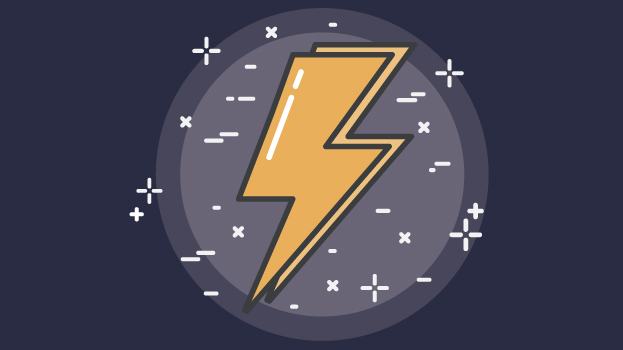Back for another quarterly edition, our very own Spark Club returned to Sydney on November 22.
For those who don’t know, our Spark Club is our way of uniting those in the energy field. Co-founded by Grant McDowell (Founder of Sunkit) and Jan Rieche (our Global Head of Renewable Energy and Infrastructure), this initiative offers participants a chance to hear from leading players.
Taking place at the EnergyLab in Sydney, the topic’s popularity saw the room fill with keen entrepreneurs. So, let’s unpack this quarter’s subject.
The Topical Subject of Blockchain
That’s right; this quarter’s event looked at how blockchain can enable the renewable energy sector.
Given the amount of press coverage, you have probably come across the term “blockchain” at one point or another.
This technology carries the potential to revolutionise one of the most fundamental aspects of human interaction: how we exchange value.
But how can it transform sectors such as the renewable energy industry?
About the Speaker
To address this question, we had the pleasure of hearing from a professional in this space: Matthew Hale. Matt is the founder of Divvi, a blockchain-based energy consultancy which focuses on community energy. As if this is not enough, Matt is also the co-founder of Everty, a startup based in EnergyLab. Everty specialises in peer-to-peer (p2p) electric vehicle charging.
Clearly, Matt is well-informed on this topic. His talk addressed the potential benefits, as well as what needs to be done to deliver these potentials. So, let’s take a look at his revelations.
An Introduction to Blockchain
So, what exactly is blockchain, you may ask. To begin his talk, Matt provided a holistic definition from Thomas Glucksmann, Head of Marketing at Gatecoin:
“Blockchain is an open source value transfer protocol that
runs on a distributed peer-to-peer network,
and secures transaction records through cryptography.”
To unpack this definition, Matt then delved into some of the fundamental elements of blockchain. Let’s look into them now.
Smart Contracts
Matt explained that smart contracts are pieces of logic, which are “packaged” in computer code, and then executed on the distributed network.
Why is this important? Well, smart contracts enable you to build apps and transact value on the peer-to-peer model.
“This would function like a distributed version of Uber, where riders and drivers could exchange with one another, without Uber adding their own fee”, said Matt.
Put simply, blockchain offers the ability to distribute and transact energy-related value without the cost of needing to go through an intermediator, such as a bank or retailer.
And whilst this concept carries incredible potential, it also bears some limitations. Consider the functionality of the apps. How would they interact with the real (tangible) world?
“Any blockchain app that has to interact with the real world in some way presents a problem,” said Matt. “How do you ensure that the input to your smart contract is reliable?”
And this limitation brings us to the next function…
Oracles
Oracles act as a “gateway” which exist between blockchain and the real world. Their purpose is to identify and verify real-world occurrences, and then communicate these happenings with the blockchain.
According to Ethereum Developers, oracles can be understood in regard to two different types:
Software Oracles manage information available from online sources such as APIs or websites. An example could be the temperature, the price of commodities, or flight delays.
Hardware Oracles acquire and communicate information directly from the physical world. For example, product information is sent to a smart contract when that product is scanned with a reader.
So, the legitimacy of a smart contract (and therefore the application) relies on the trustworthiness of this oracle. Afterall, if the oracle communicates false information, then the app’s function will be based on an incorrect input.
Blockchain and the Renewable Energy Sector
Okay, so what do all of these capabilities offer the energy sector? Well, on a basic level, applications on the blockchain allow individuals to transact value (specifically energy-related value). To illustrate this further, Matt drew on an example.
Energy Trading In Use
Matt spoke about an example from PowerLedger. The company has established an application which is designed to facilitate energy trading in a p2p fashion. First of all, hosts would own a smart meter (which would serve as an oracle). Then, their amount of energy could be traded on the network through distributed “sparks” (which act as settlement tokens). So, by generating their own renewable energy, individuals receive a piece of cryptocurrency, which could then be traded.
“Overall, the [potential] uses are numerous, and not just limited to p2p trading. The industry is extending rapidly,” said Matthew.
What This Means for the Industry
It’s hard to predict how blockchain will impact the sector. However, Matt revealed he became interested in blockchain because it offered a solution to a pretty significant problem.
“I first came to blockchain at the start of 2016, because I was looking at the problem of wanting to move energy from where it is generated (locally) to somewhere else (locally).”
Blockchain (and cryptocurrency) has the potential help in this regard, as it could enable participants to trade energy with a relevant currency. So, rather than sourcing energy from the National Electricity Market (NEM), tokens could be used to purchase energy from someone in your own community.
The Limitations and Potentials
Of course, these new ideas come with limitations. First of all, p2p trading would rely on the availability of multiple microgrids. That is to say, communities would require a local microgrid, which they could transmit their energy contributions to.
If these microgrids were feasible, then the renewable energy industry could become resistant to storm-related power outages. Allow me to explain.
Let’s suppose a storm has led to a power outage somewhere in your state. You would no longer be affected, as you wouldn’t be reliant upon the NEM for supply. Rather, you could purchase local energy through the blockchain.
Of course, this possibility relies on other factors, such as the establishment of small, independent networks which could function on”island mode”. However, the potential is certainly one worth taking into account when we consider blockchain’s potential.
There’s More to Explore
The popularity of this topic saw the Spark Club reach its full capacity! Clearly, energy entrepreneurs are interested in blockchain and the latest renewable energy possibilities.
Are you also interested in building energy business? Would you like to learn from key industry players, and network with like-minded entrepreneurs?
Then be sure to subscribe to see upcoming meetings on our events page. Don’t forget to follow Spark Club on Twitter, and check out the website.
See you at the next event!













 December 21, 2017
December 21, 2017 






